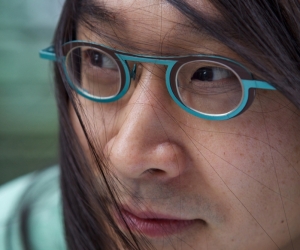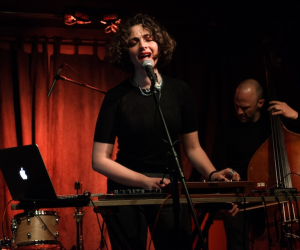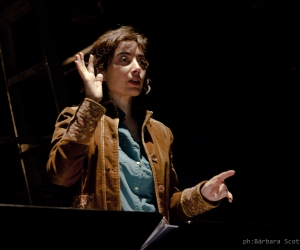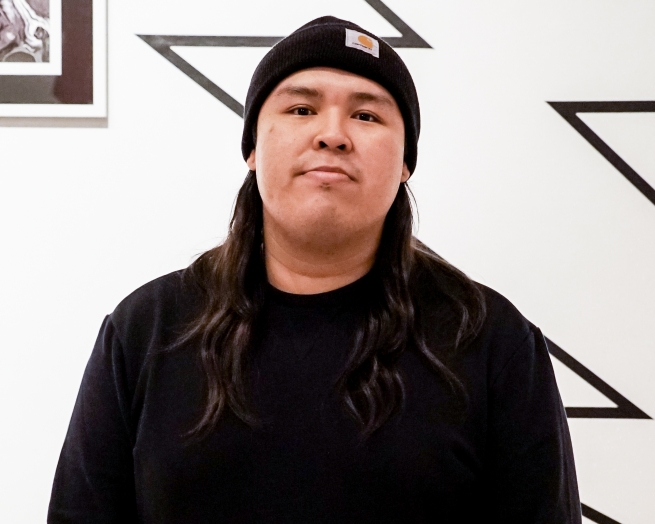
Blackfoot Confederacy member Curtis Running Rabbit-Lefthand is the founder and executive artistic director of Indigenous Resilience in Music (IRIM), a collective that supports Indigenous musicians and youth in their learning, performing, recording, and collaborating.
The group’s Indigenous-led workshops and events address topics ranging from spiritual values and language reclamation to the basic practicalities of how the music industry currently operates. At presstime, IRIM was set to present the Rhythm of the People Music and Arts Festival, a multiarts and crafts festival that aims to shift perspectives on what a festival can be and mean, in August 2020, in Treaty 7 (Calgary, Alberta). [Editor's note: In May 2020 the festival was cancelled, and IRIM worked toward expanding digital initiatives.]
A dedicated musician in his own right, Lefthand fronts the hardcore punk band Signatory. In February 2020, he played a solo set at Open Space gallery in Lekwungen territories (Victoria, British Columbia) with a guitar and small collection of effects pedals. The performance was a response to When Raven Became Spider, a critically acclaimed exhibition that presents comics and graphic novels as sites of reemergence for ancient Indigenous stories and heroes—a theme that connects intimately to Lefthand’s multifaceted commitment to cultural endurance. “Supernatural existence,” writes Leena Minifie, the exhibition’s curator, “is an extension of—and an essential element of—every traditional story, a force that weaves through narratives across the continents in all Indigenous cultures.”
The following interview has been condensed and edited.
MUSICWORKS: What was your process for generating a response to When Raven Became Spider? (see performance photo below) To pick an example, why did you decide to play what you explained to the audience is a mourning song from your community?
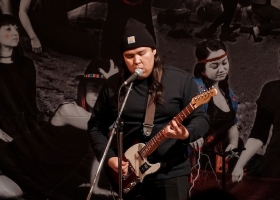
CURTIS RUNNING RABBIT-LEFTHAND: I chose to perform songs I’d previously written that I felt brought the same energy as the exhibition. The whole gallery is filled with work by incredible Indigenous people—artists who are so amazing at what they do. But I know sometimes it’s hard to do what they do, especially having the traumas that come with living as an Indigenous person in this day and age, with having families that may have been affected by residential schools. So I sang our mourning song out of respect for grief. That song itself was gone from our community for a hundred years, and the fact that it has recently been reintroduced, that in itself was something for me to share as a dedication to these artists. I think people feel like mourning is all about heartbreak and loss, but it’s also about what comes after. Grief comes with renewal and rebirth and strengthening yourself again. This song is meant to signal where you’re meant to go next: to healing. Music is a healing mechanism for our traumas.
MW: In terms of renewal, IRIM supports Indigenous musicians on so many levels, and you’re currently running an artist residency that facilitates artists writing and recording a song in their own language. Could you talk about the significance of the residency?
CL: For us as a people, our language is an essential component of what we sing and how we sing, and so immersing yourself in those songs will help you reclaim your language. It’s easier to do through music, when you can feel the beat, feel the rhythm. The challenge with this residency is that it’s often hard for people to find a language speaker to work with. But they do exist out there, and there are artists who are really willing to commit to the program and immerse themselves in their language, and to put that to song.
MW: And IRIM projects will also include the Rhythm of the People Music and Arts Festival in 2020.
CL: The IRIM artist residency and youth programs will lead up to the music festival, which is really a way of capturing this idea of togetherness and community-building. The roster of artists we have coming is fifty per cent Indigenous and fifty per cent non-Indigenous, and the programming is based on creating a community where everyone shares the stage based on music genre, from hip-hop to rock to pop to hardcore to punk, regardless of their cultural background. It’s all mixed well and people are playing on the stages they deserve to play on.
MW: Could you describe how Rhythm of the People operates and is organized in contrast to the current standard for typical North American music festivals?
CL: Our whole organization is Indigenous, from our Grand Council—which is our quote unquote board of directors—to our staffing. Our decision-making around programming is collective, based on our spiritual background and who we are as Indigenous people. We all agree on something, and then it happens. You have to be Indigenous to be a part of IRIM. That’s part of our mandate. It’s not meant to cause segregation or discrimination or anything like that. It’s more that we want to demonstrate that Indigenous people are here and they can do the work needed to create an amazing festival, to be a part of the music industry—and to change perspectives on what the music industry is because we’re shaking things up with our programming.
Photos by Kyra Kordoski.
